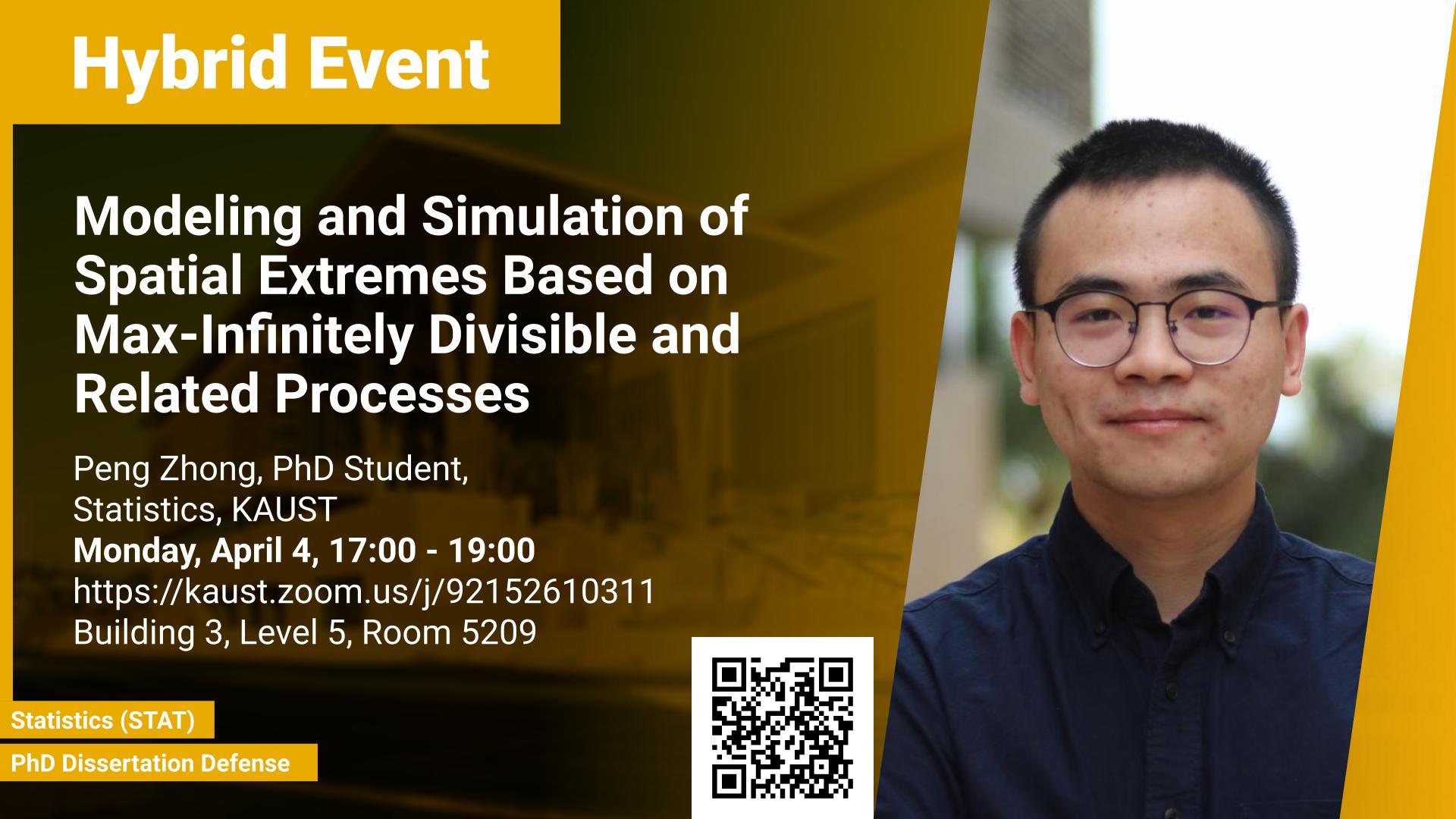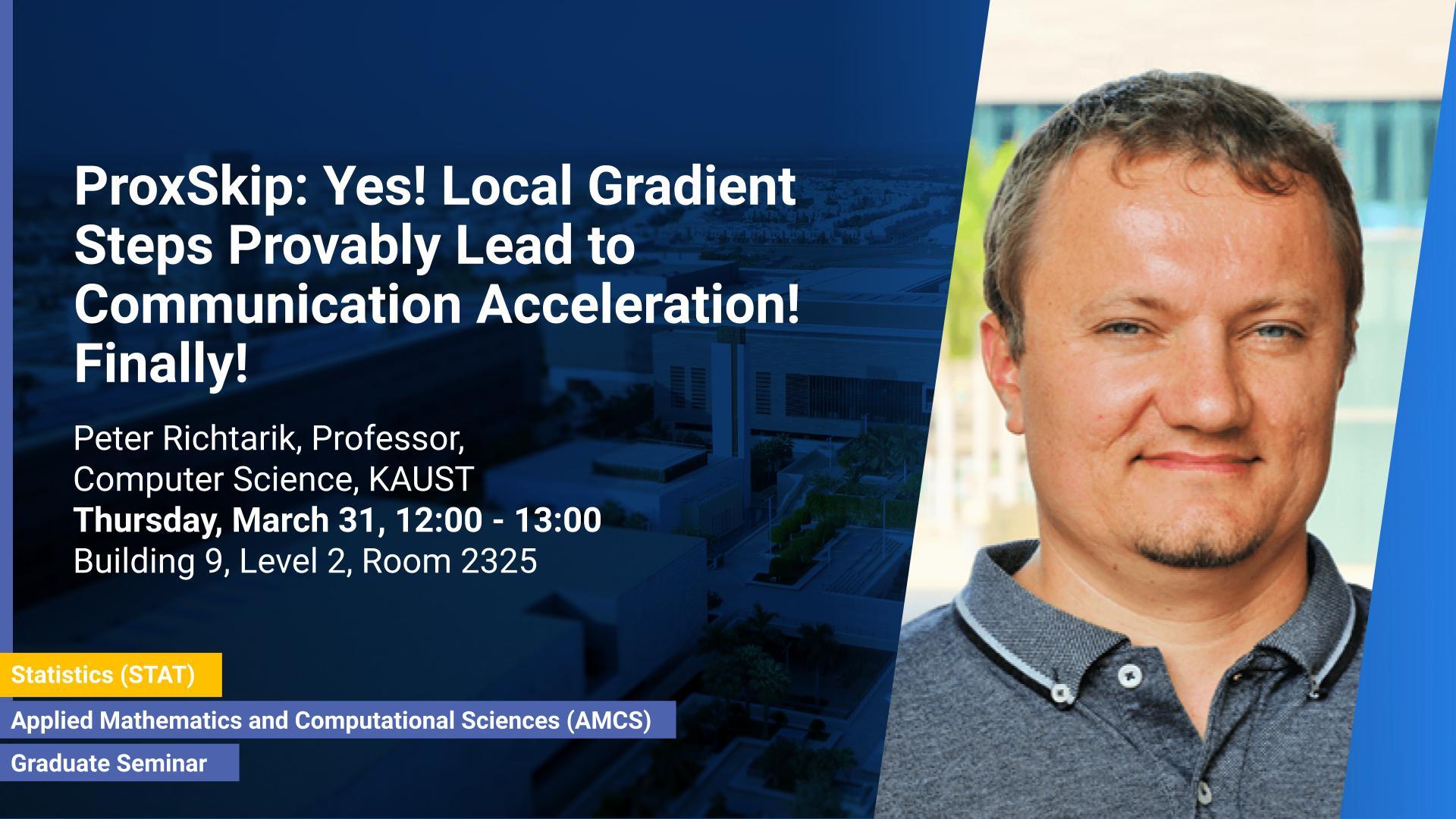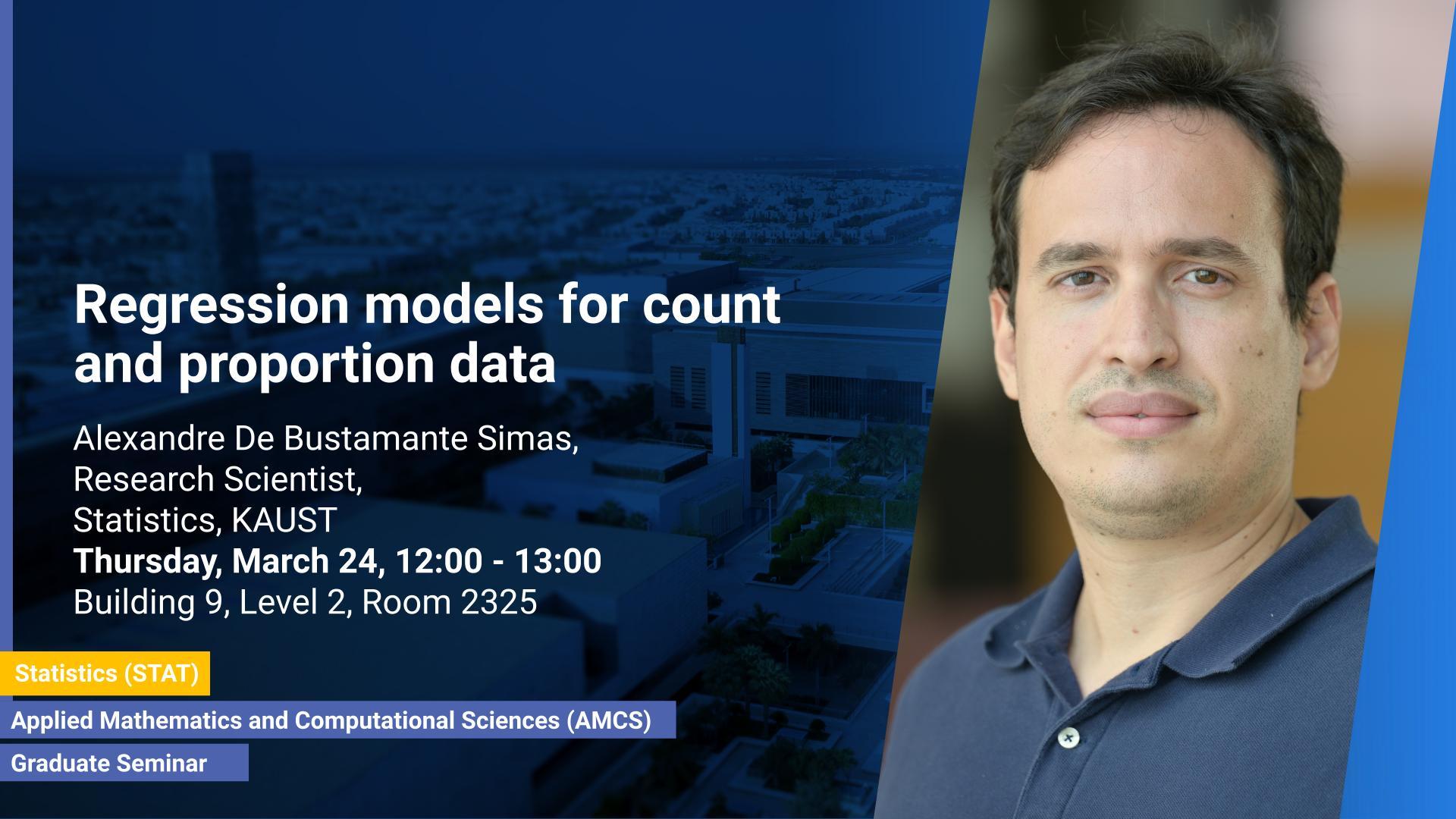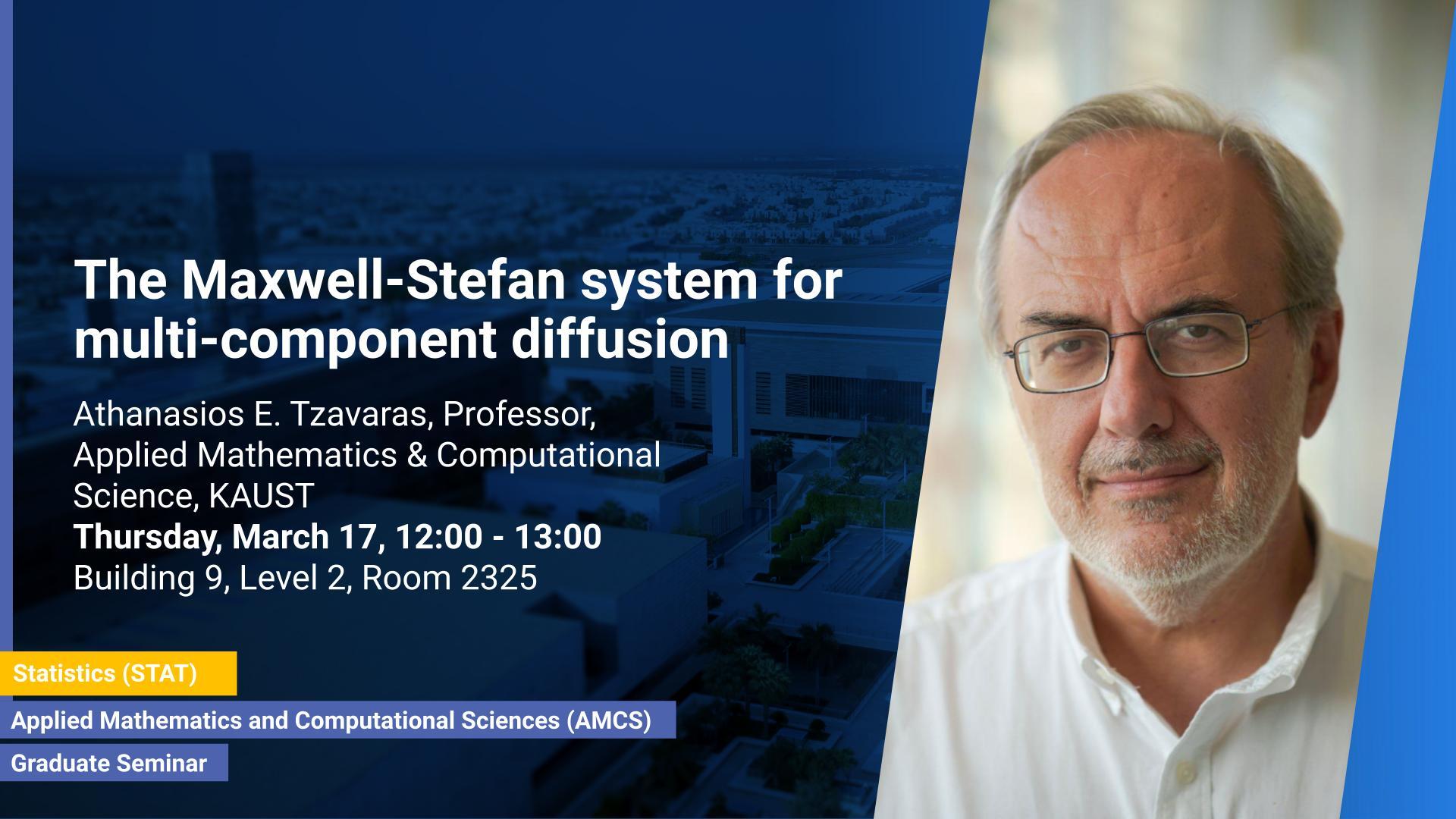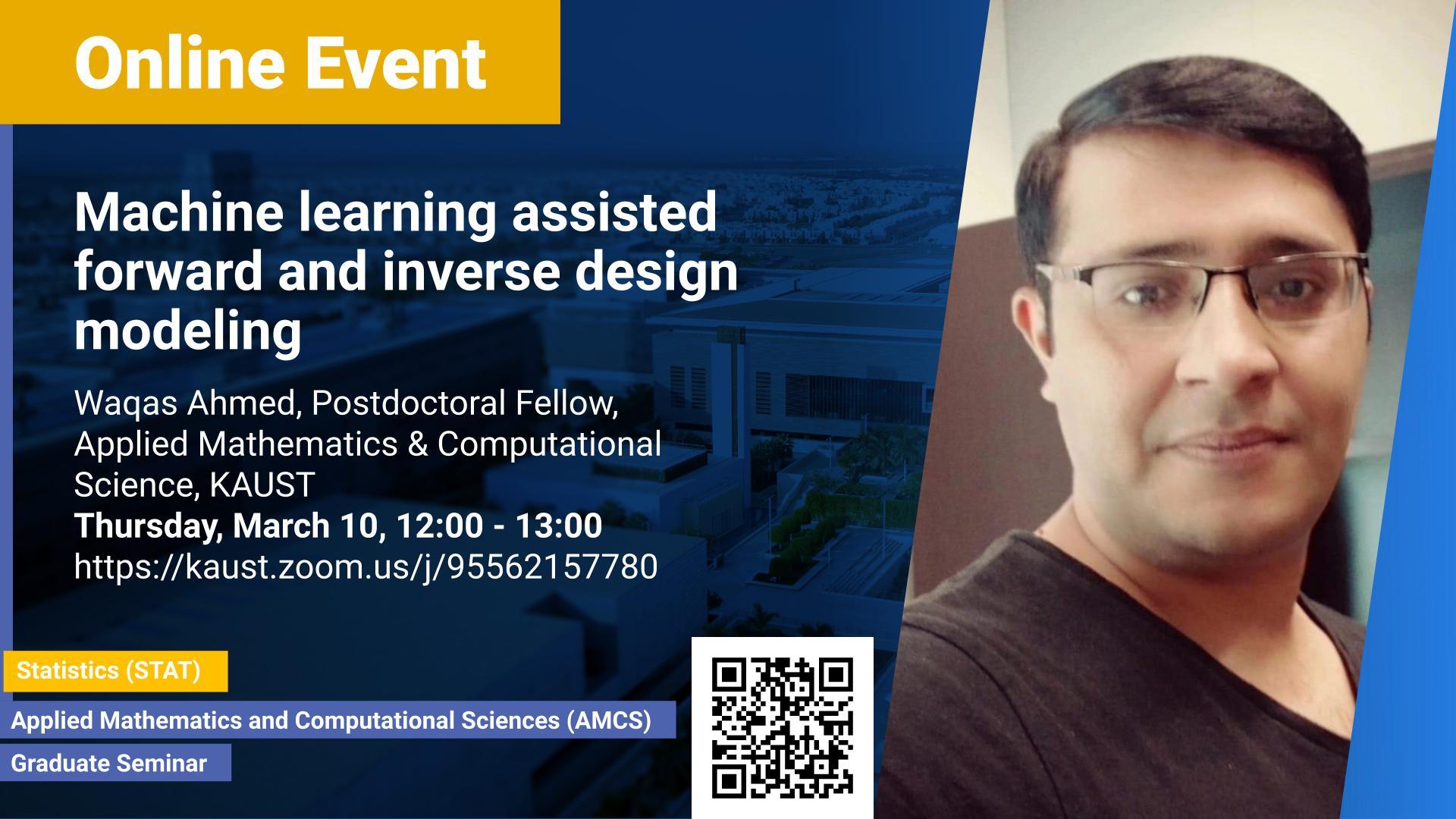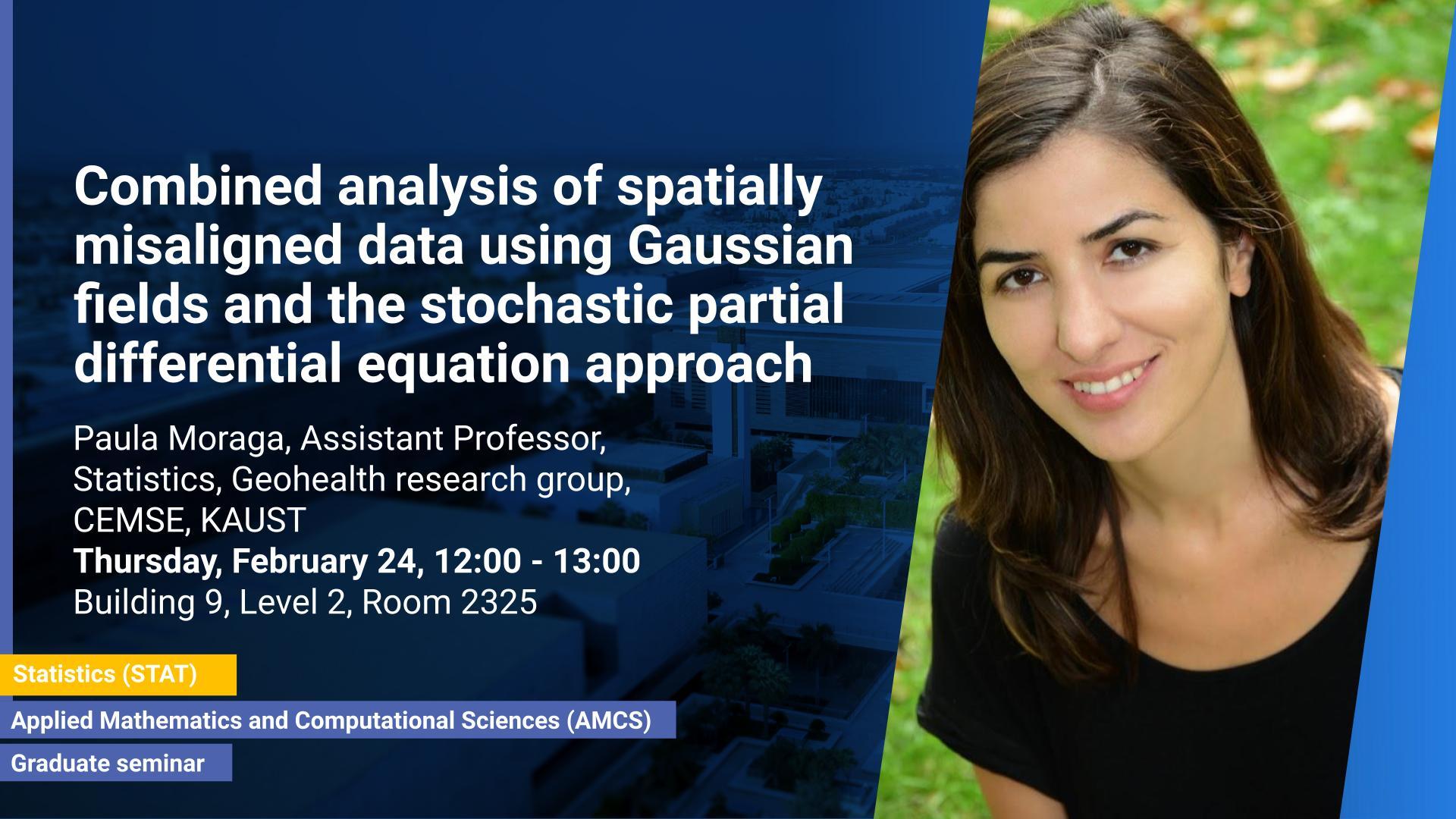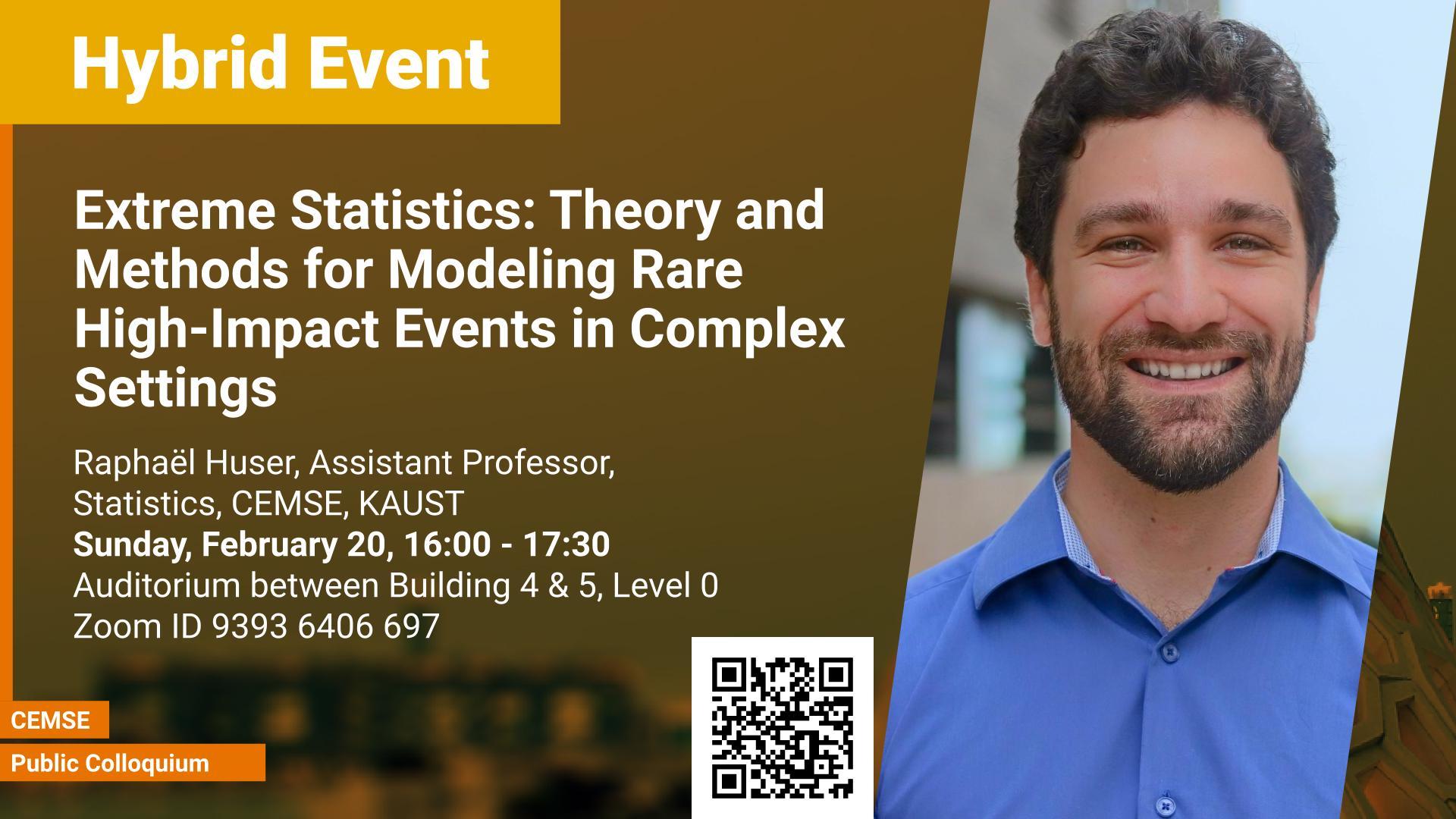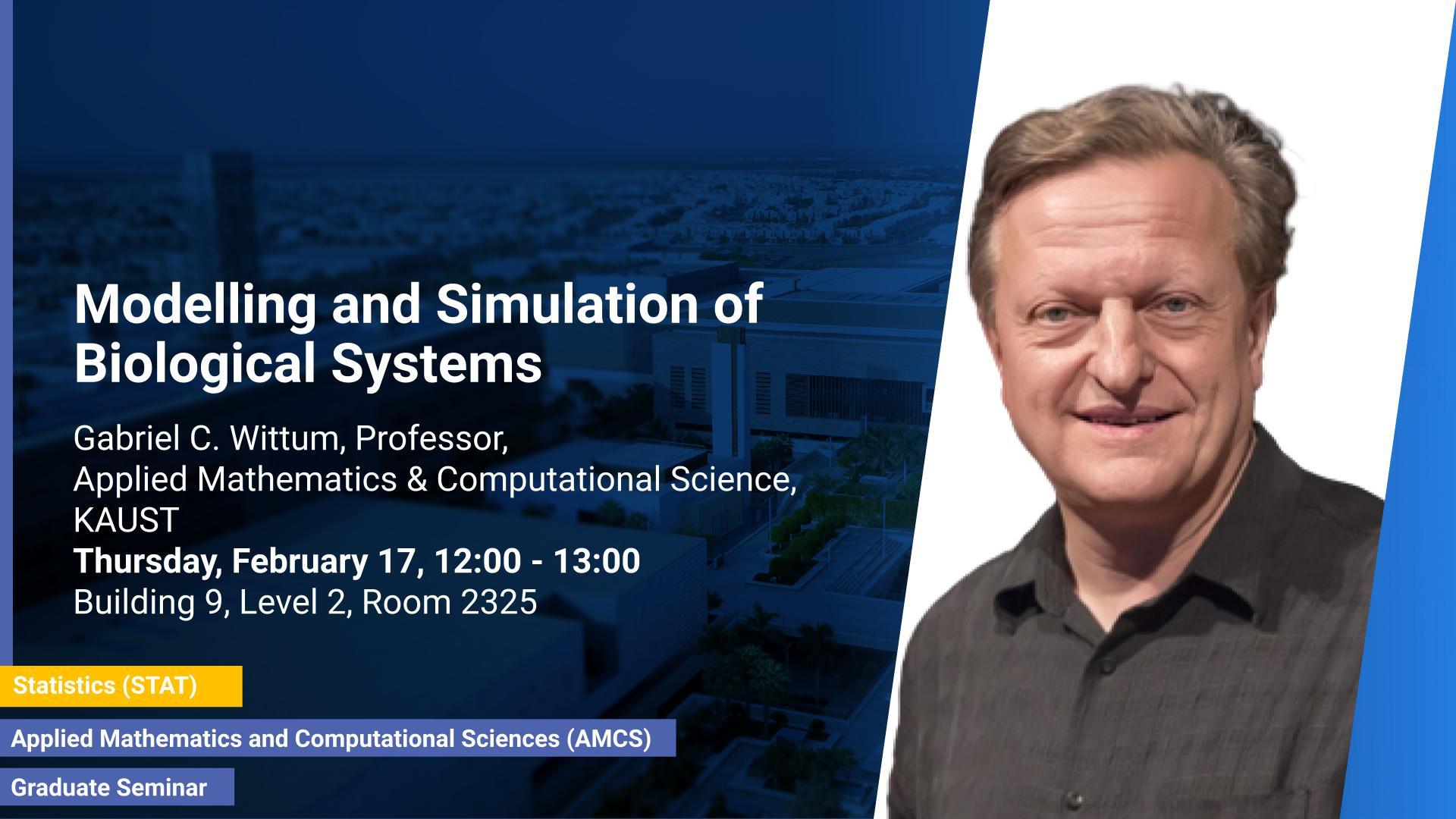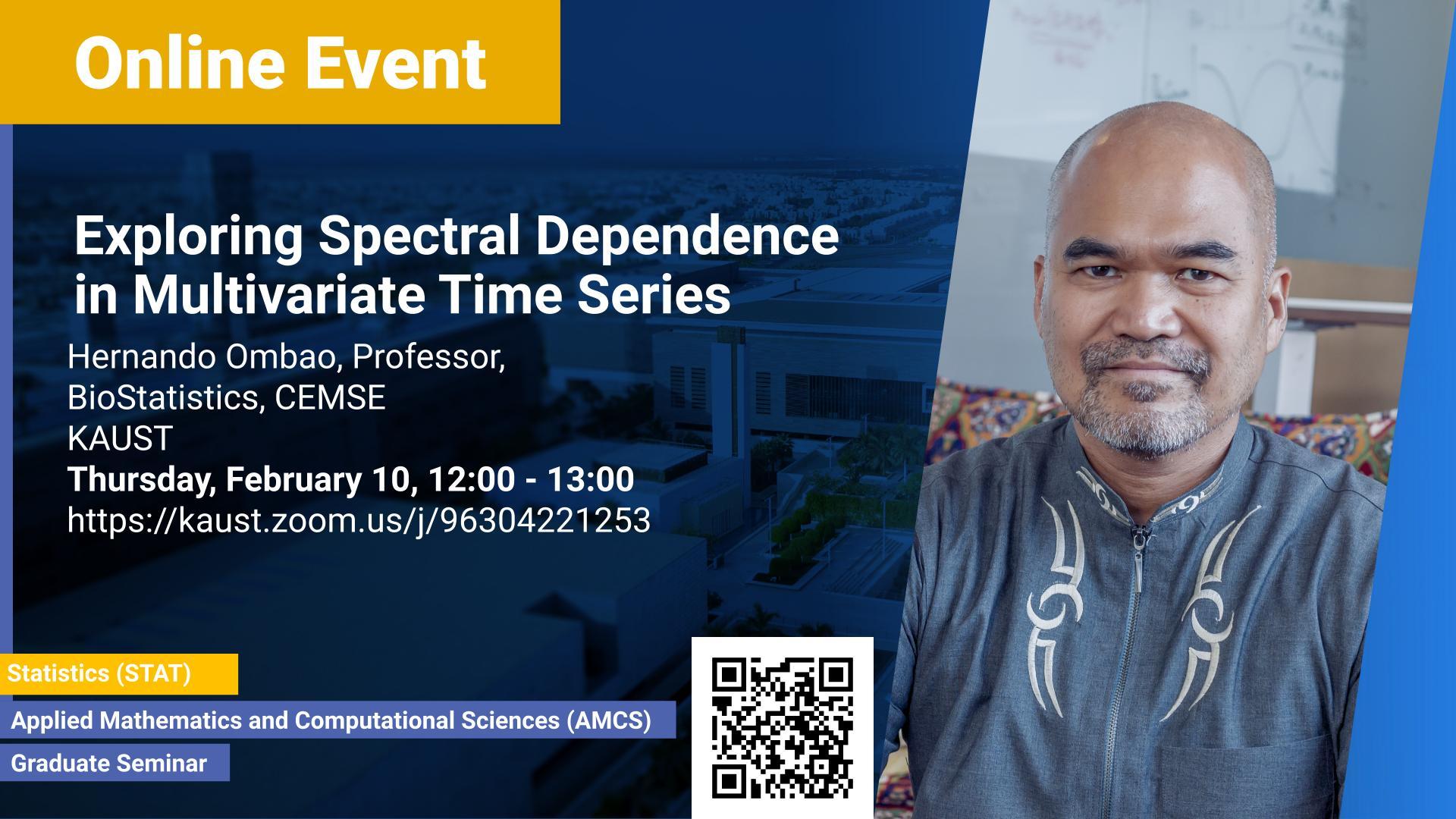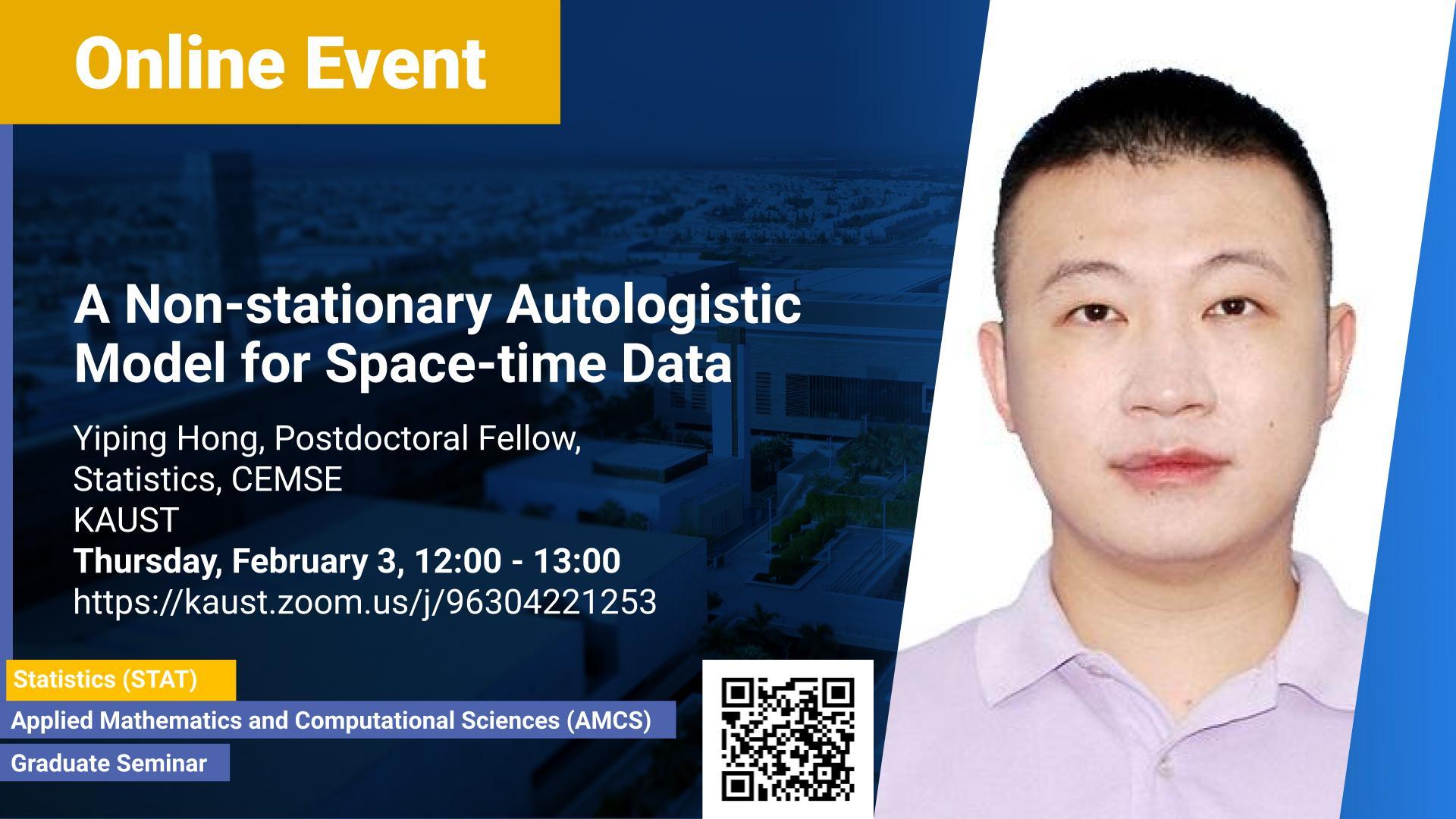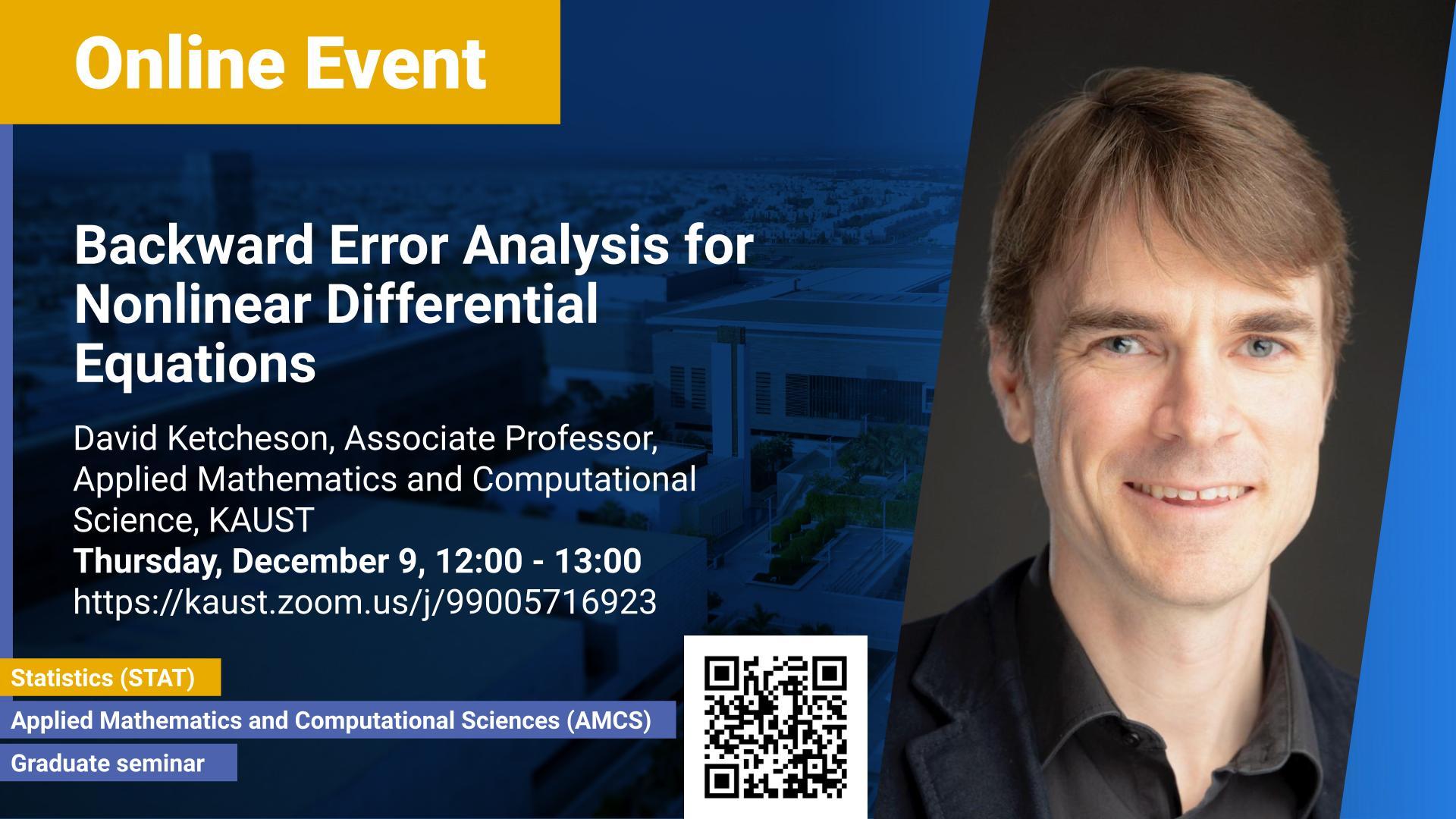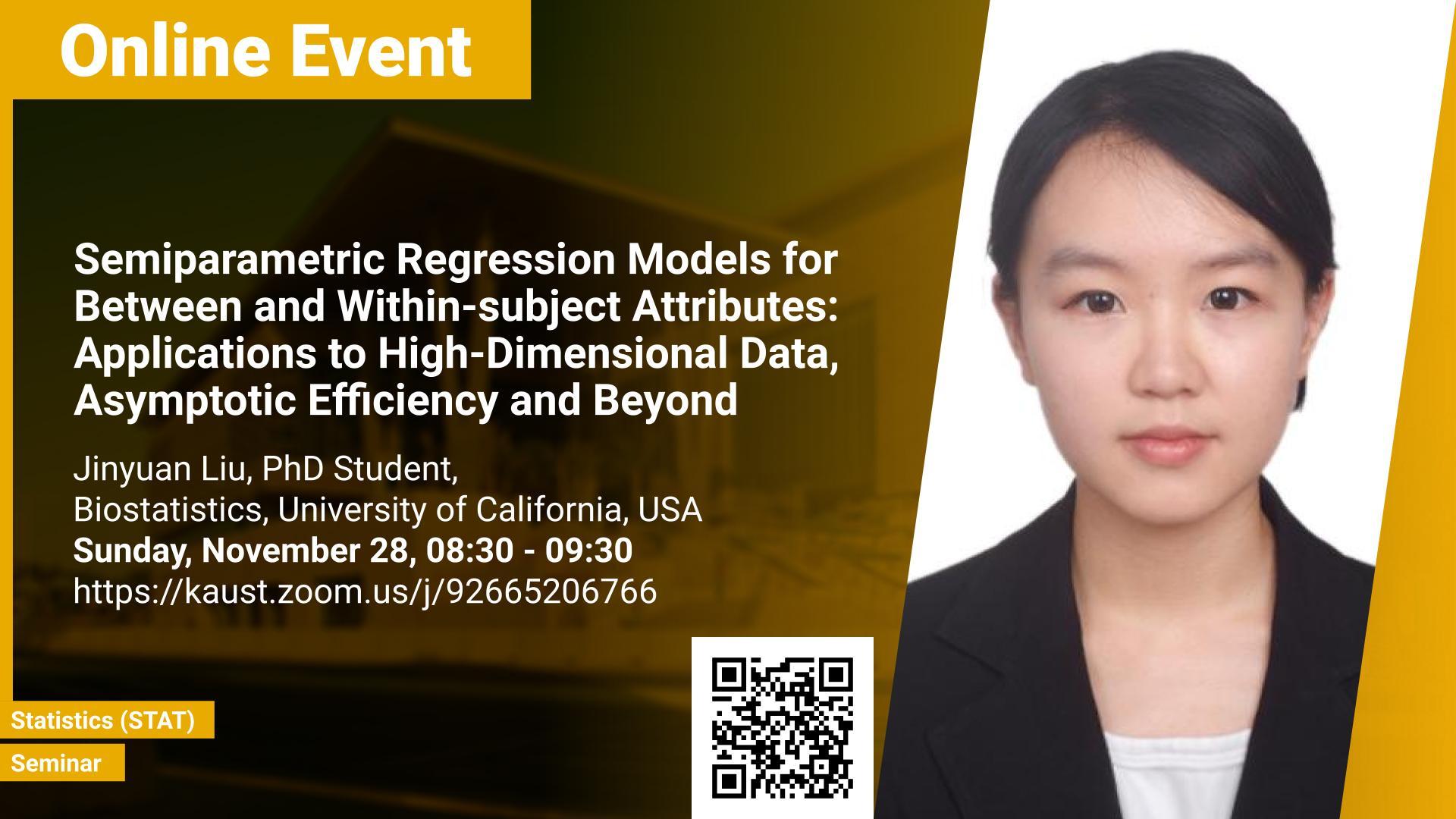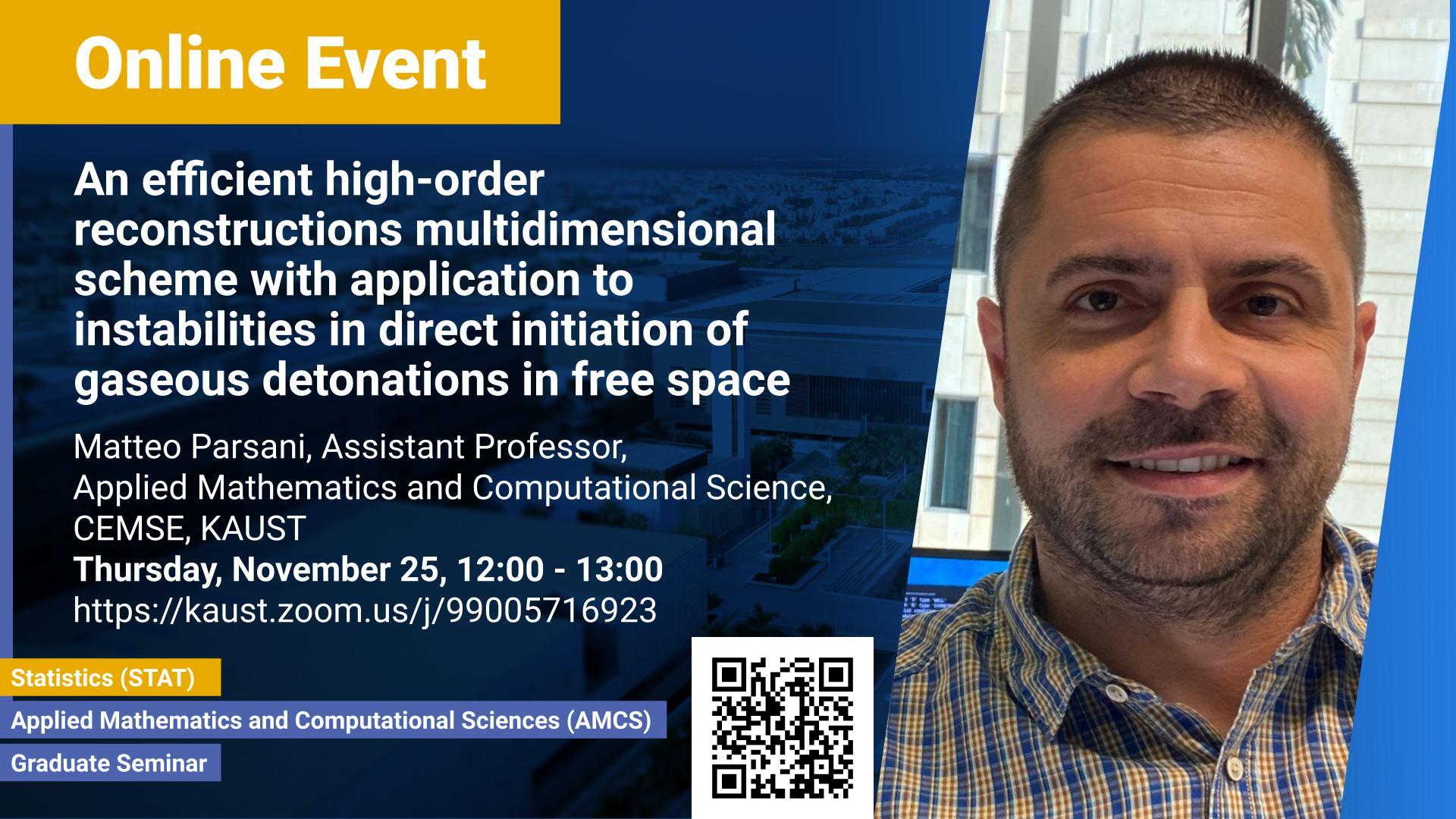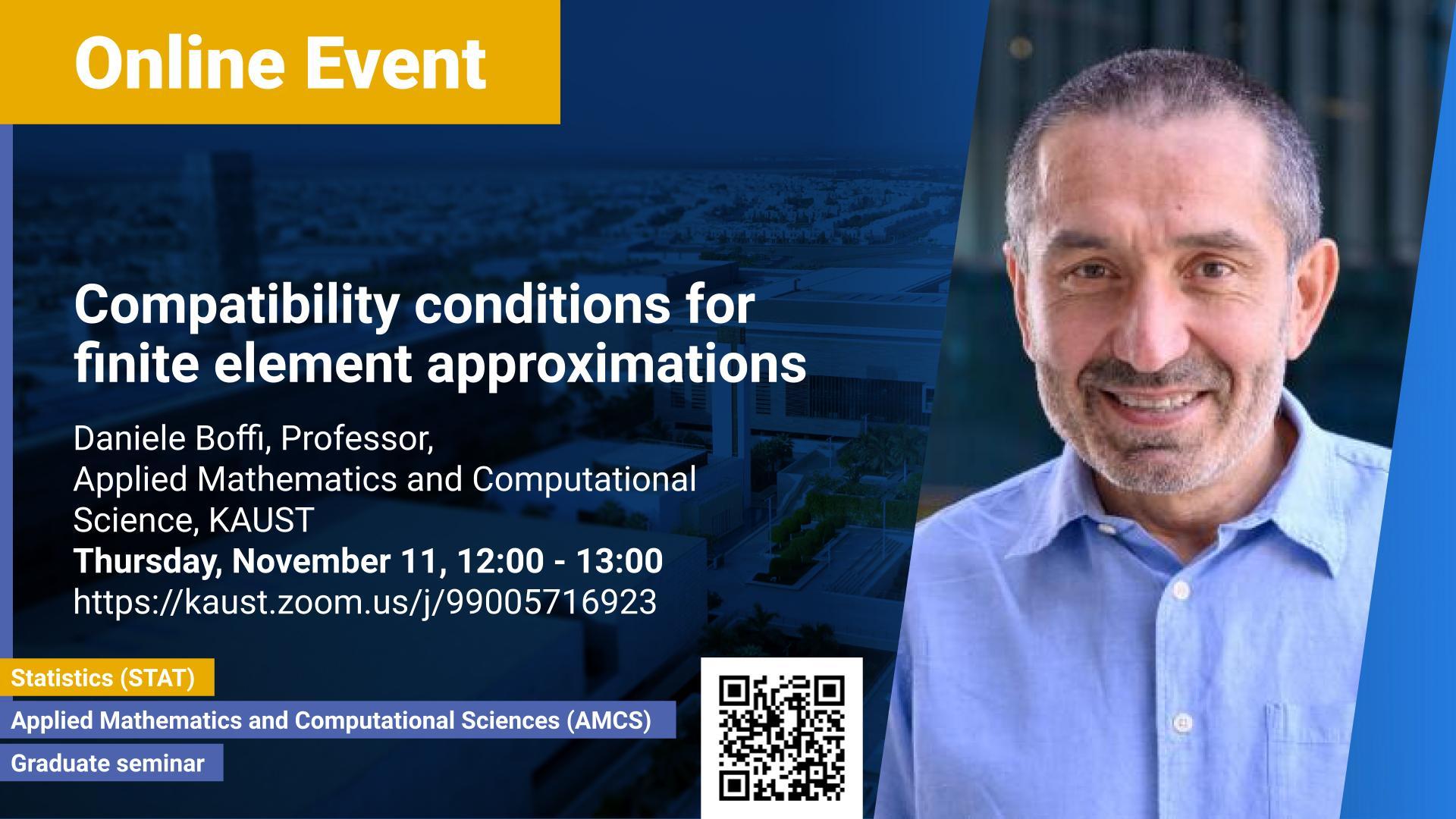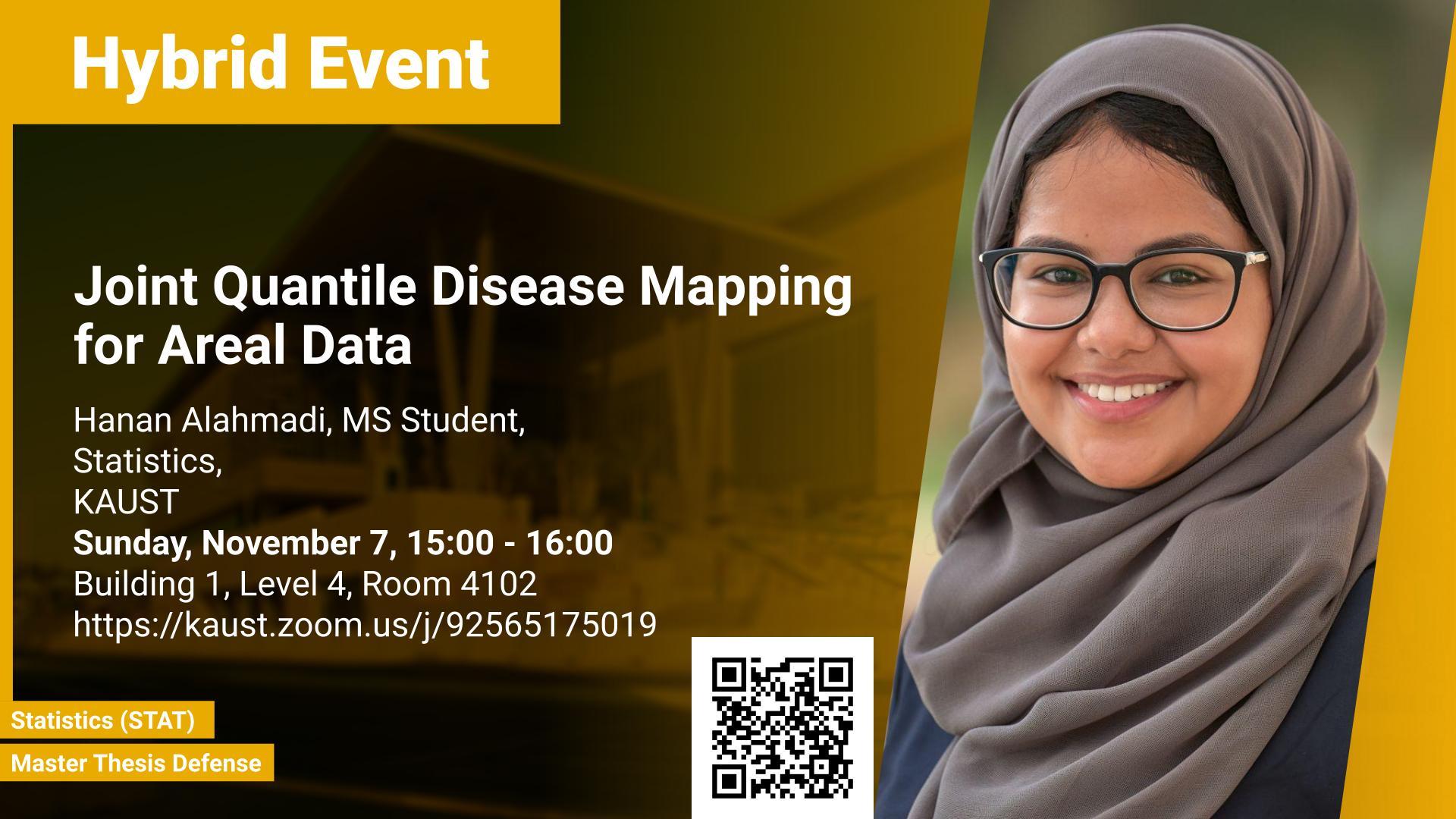Sunday, February 20, 2022, 16:00
- 17:30
Auditorium between B4 and 5, L0
Rare, low-probability events often lead to the biggest impacts. The goal of the Extreme Statistics (extSTAT) research group at KAUST is to develop cutting-edge statistical approaches for modeling, predicting and quantifying risks associated with these extreme events in complex systems arising in various scientific fields, such as climate science and finance. In particular, the work that we develop and continue to refine has a direct potential impact to climate scientists and related stakeholders, such as engineers and insurers, who have realized that under climate change, the greatest environmental, ecological, and infrastructural risks and damages, are often caused by changes in the intensity, frequency, spatial extent, and persistence of extreme events, rather than changes in their average behavior. However, while datasets are often massive in modern day applications, extreme events are always scarce by nature. This makes it very challenging to provide reliable risk assessment and prediction, especially when extrapolation to yet-unseen levels is required. To overcome these existing limitations, the extSTAT research group develops novel methods that transcend classical extreme-value theory to build new resilient statistical models, as well as computationally efficient inference methods, which improve the prediction of rare events in complex, high-dimensional, spatio-temporal, non-stationary settings. In this talk, I will provide an overview of my group's recent research activities and future directions with a focus on core statistical methodology contributions. The technical part of the talk will describe selected research highlights, which include (but are not limited to) the development of new flexible sub-asymptotic models applied to assessing contagion risk among leading cryptocurrencies, the development of a novel low-rank spatial modeling framework applied to estimating extreme hotspots in high-resolution Red Sea surface temperature data, and the development specialized spatio-temporal point process models applied to predicting devastating rainfall-induced landslides in a region of Italy. I will conclude my talk with an outlook on my future research plans. Motivated by methodological obstacles that arise with “big models” for complex extremes data, as well as new substantive challenges in collaborative work at KAUST, we will embark on the development of fundamentally superior models that have an intrinsically sparse probabilistic structure, as well as new "hybrid" methods that combine the strength of (parametric) models from extreme-value theory with the pragmatism and predictive power of (nonparametric) machine learning algorithms, thus opening the door to interpretable and “extreme-ly” accurate predictive models for rare events in unprecedented dimensions.

